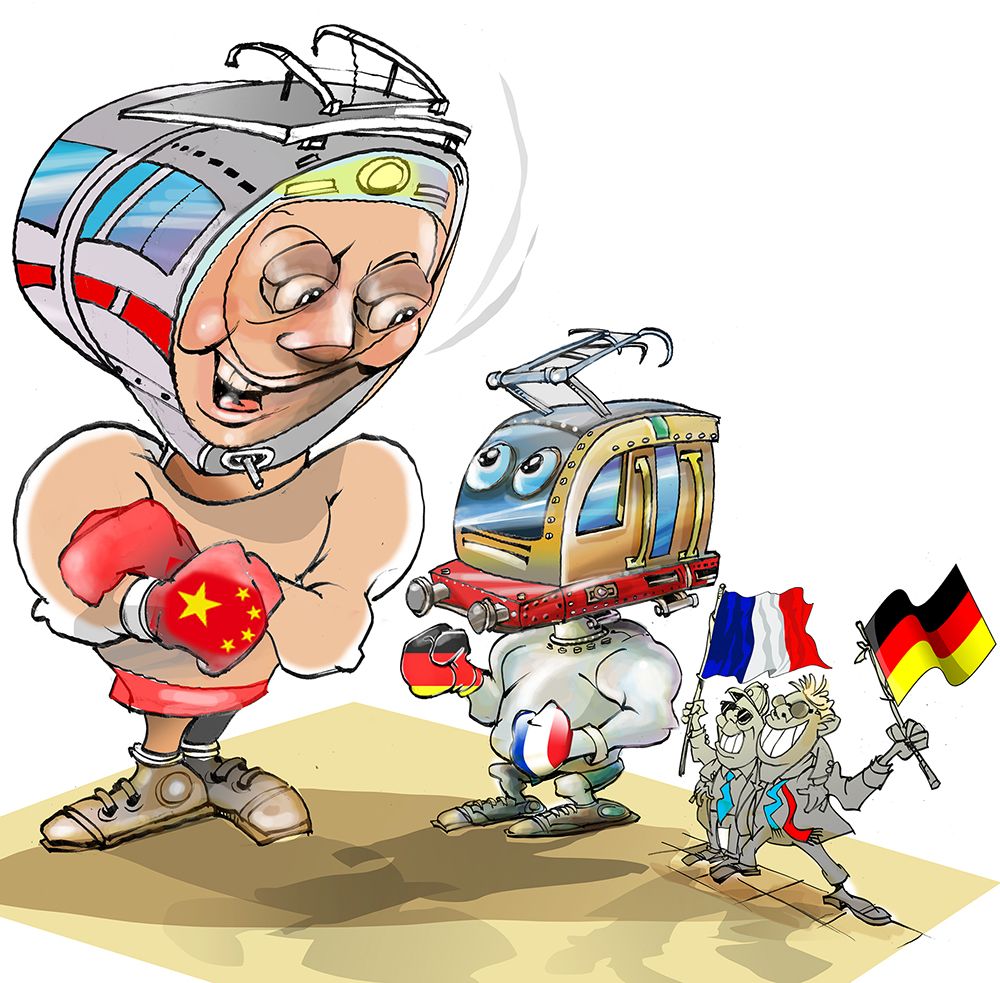
Siemens of Germany and Alstom of France have announced a merger of their rail businesses, citing the need to form a so-called “European champion” in the face of growing competition from China.
The headline in one German financial daily on the day of the announcement was “together against the Chinese Giants.” At a press conference in Paris on September 27, a presentation noted unsubtly that a “dominating competitor, and industrial policy of its home country, creates a long-term threat for competitors, and thus for customers’ choices in the long run”.
Siemens CEO Joe Kaeser commented that, “the global market-place has changed significantly over the last few years – a dominant player in Asia has changed global market dynamics, and digitalization will impact the future of mobility.”
According to the company presentation, Siemens Mobility and Alstom are individually ranked second and third by revenues for global train manufacturing. This puts them ahead of Bombardier, GE and Hitachi. However, even with combined revenues of 15.3 billion euros, the new Alstom Siemens will still be much smaller than CRRC of China, which occupies first place. For its 2016 financial year CRRC reported revenues of 225 billion yuan (28.6 billion euros at current exchange rates).
Kaeser’s statement highlighted CRRC’s active participation in Belt Road projects, which leveraged on international capacity cooperation to expand into the international market. For example, contracts were won for metro vehicles in Chicago, Kenya, Thailand, India and Pakistan. Analysts note that China is also pressing hard for its high-speed trains to be used on the Kuala Lumpur to Singapore High Speed Rail (HSR) project.
Clearly CRRC has the vast domestic market to play in, but both Alstom and Siemens have become increasingly concerned about CRRC becoming a big player in the European market, as well as globally. Siemens and Alstom say that their global footprint should enable the merged company to access growth markets in Middle East and Africa, India, and Middle and South America where Alstom is present, and in China, United States and Russia where Siemens is present. The new entity will have an existing order backlog of 61.2 billion euros.
Given the importance of the TGV and ICE trains as symbols of French and German industrial prowess, their merger would have been sounded out at a political level in its early stages. The two companies noted at the press conference that both the French and German states are supporting the transaction. The French government has received a number of undertakings by Siemens, including a standstill at 50.5% of Alstom’s share capital for four years after closing, and certain governance and organizational and employment protections.
The Siemens Mobility Division will be carved out of the existing corporate structure at Siemens, which is also involved in segments such as power generation. The Mobility Division has five business units: Mobility Management, Turnkey Projects & Electrification, Mainline Transport, Urban Transport, and Customer Services. The portfolio of the Mobility Division includes regional and high speed (ICE) trains, metro cars, streetcars and light rail, passenger coaches, driverless vehicles and locomotives. Currently, Alstom makes the TGV, while Siemens manufacturers the ICE models.
Siemens also makes signal and control technology for rail-based passenger and freight traffic; electrification solutions for rail and road traffic; maintenance and service of vehicles and infrastructure; road traffic control and information systems, and electronic payment and toll systems for urban and interurban traffic.
The global headquarters, as well as the management team for rolling stock, will be located in the Paris area, and the combined entity will remain listed in France. The headquarters for the Mobility Solutions business will be located in Berlin. In total, the new entity will have 62,300 employees in over 60 countries.
Siemens will receive newly issued shares in the combined company representing 50% of Alstom’s share capital on a fully diluted basis. The Siemens Mobility carve-out from the existing Siemens corporate structure is expected to take place by the end of 3Q 2018, with the entire deal then closing by the end of the year.









